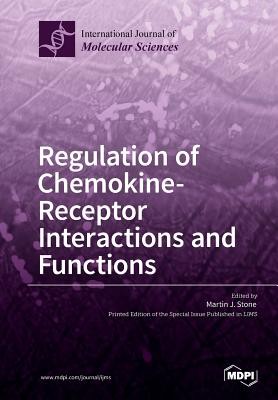
- We will send in 10–14 business days.
- Publisher: MDPI AG
- ISBN-10: 3038427284
- ISBN-13: 9783038427285
- Format: 17 x 24.4 x 1.6 cm, minkšti viršeliai
- Language: English
- SAVE -10% with code: EXTRA
Regulation of Chemokine- Receptor Interactions and Functions (e-book) (used book) | bookbook.eu
Reviews
Description
A hallmark of inflammation is the accumulation of leukocytes, which can serve to remove pathogens and necrotic tissue, but may also damage healthy tissue and exacerbate the inflammatory response. Our understanding of leukocyte recruitment in inflammation was revolutionized in the late 1980s by the discovery of chemokines (chemotactic cytokines), a family of small, secreted proteins that induce migration of selective subsets of leukocytes. Shortly afterwards, chemokines were found to exert their functions through the now familiar chemokine receptors, members of the G protein-coupled receptor superfamily. As their physiological and pathological functions were elucidated, chemokine receptors have become popular targets for drug development in inflammatory diseases as well as cancer metastasis and HIV infection. Extensive research has revealed that the functions of chemokines and their receptors are regulated at numerous levels, including: genetic mutations/polymorphisms; control of expression levels; ligand internalization via functional or decoy receptors; intrinsic selectivity of chemokine-receptor binding; hetero- or homo-oligomerization of chemokines or of receptors; alternative signalling pathways; interaction of chemokines with glycosaminoglycans; post-translational modifications; and binding to pathogen-derived inhibitors. This Special Issue of IJMS focused on the natural and pharmacological mechanisms by which the activities of chemokines and their receptors can be regulated.
EXTRA 10 % discount with code: EXTRA
The promotion ends in 23d.23:24:09
The discount code is valid when purchasing from 10 €. Discounts do not stack.
- Publisher: MDPI AG
- ISBN-10: 3038427284
- ISBN-13: 9783038427285
- Format: 17 x 24.4 x 1.6 cm, minkšti viršeliai
- Language: English English
A hallmark of inflammation is the accumulation of leukocytes, which can serve to remove pathogens and necrotic tissue, but may also damage healthy tissue and exacerbate the inflammatory response. Our understanding of leukocyte recruitment in inflammation was revolutionized in the late 1980s by the discovery of chemokines (chemotactic cytokines), a family of small, secreted proteins that induce migration of selective subsets of leukocytes. Shortly afterwards, chemokines were found to exert their functions through the now familiar chemokine receptors, members of the G protein-coupled receptor superfamily. As their physiological and pathological functions were elucidated, chemokine receptors have become popular targets for drug development in inflammatory diseases as well as cancer metastasis and HIV infection. Extensive research has revealed that the functions of chemokines and their receptors are regulated at numerous levels, including: genetic mutations/polymorphisms; control of expression levels; ligand internalization via functional or decoy receptors; intrinsic selectivity of chemokine-receptor binding; hetero- or homo-oligomerization of chemokines or of receptors; alternative signalling pathways; interaction of chemokines with glycosaminoglycans; post-translational modifications; and binding to pathogen-derived inhibitors. This Special Issue of IJMS focused on the natural and pharmacological mechanisms by which the activities of chemokines and their receptors can be regulated.


Reviews